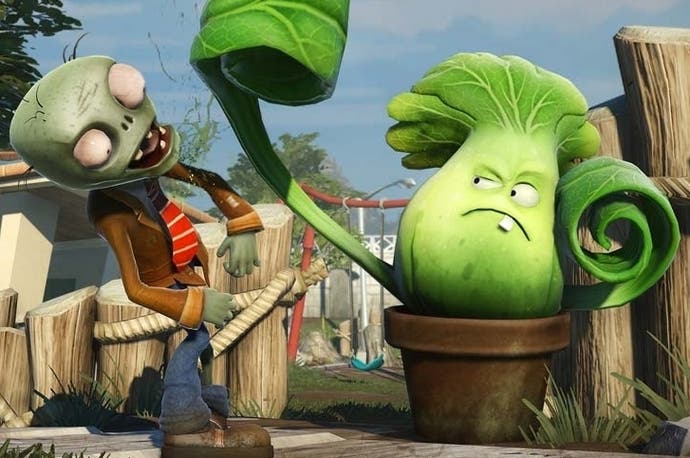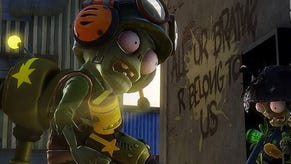Plants vs Zombies: Garden Warfare review
Thorn of the dead.
In the space of three weeks, EA is set to release two separate multiplayer-only, Xbox exclusive (well, not available on PS4 anyway) squad-based shooters. Neither are free-to-play, and amazingly neither feature nefarious microtransactions. EA's decision to unleash Plants vs Zombies Garden Warfare mere weeks before the all-conquering Titanfall is a curious one indeed, but then, this is a curious game.
Like all sensible people, I'm naturally wary of any entertainment product that builds its own identity around a pun, but if anyone can get away with it, it's the gloriously daft bunch at PopCap. And get away with it they do, as against all logical thinking, Garden Warfare is a supremely well-constructed, balanced and engaging multiplayer shooter.
Eschewing any notion of single-player (a very wise decision), Garden Warfare splits its horticultural carnage over two distinct modes, Garden Ops, and the imaginatively titled Multiplayer. Garden Ops is probably the best way to kick things off, a four-player iteration of horde that makes thematic sense given the series' tower defence roots.
Here, four plants have to protect a garden against ten increasingly difficult waves of zombies. Standard stuff, but it's an immediate showcase for Garden Warfare's marvellously smooth and precise gunplay, and its faultless controls. The game is played in third-person but retains a first-peron control set, never dropping frames and remaining fluid and accurate no matter how many grey-skinned groaners there are on screen trying to hack your garden apart.
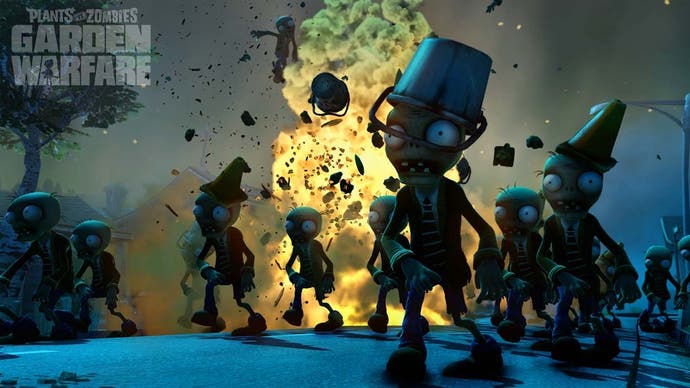
Garden Ops feels like an introduction to the wider game's systems. Every round is relatively short-lived, especially compared to some of Gears of War's wave-based epics. After the tenth round of onslaught, series stalwart Crazy Dave swoops in to rescue your team, marking out a landing zone on the map that you must defend for a couple of minutes before you're rescued in his dropship. It's surprisingly thrilling - much like Titanfall's signature end-of-round post-game skirmishes - and requires communication and teamwork to cope with the relentless march of the undead.
That teamwork will carry you into multiplayer, and Garden Warfare's best mode, Gardens And Graveyards. This is a splendid 15-a-side combination of Battlefield's Conquest and Rush modes, where the Zombies attempt to capture a series of Plant-defended Gardens by squatting in a marked zone before a timer runs out. Every garden the Zombies seize turns into a graveyard, until the match reaches a climactic battle that plays out differently on each map. You might see the Plants desperately defending a mega flower (complete with its own health bar) as Zombies shoot towards it in cannons, or the shamblers might need to blow up a base using explosive Z4 (sounds better when you say it like an American). These final melees are thrilling and oddly unique; a genuine innovation within familiar boundaries.
It's in Gardens And Graveyards where the beauty of Garden Warfare exposes itself to the sunlight. This is a class-based shooter, with four archetypes on both teams offsetting and counter-balancing one another beautifully. Peashooters and Foot Soldiers act as grunts, both capable of good mid-range blasting and front-line slaughter.
The Plants have Chompers, purple Venus Fly Traps that can burrow underground and chomp an undead in one bite, while the Zombies' Engineers fire rockets and hurl stun grenades (which can also unearth burrowed Chompers, handily). There's a medic on both teams - the grinning Sunflower can constantly buff his teammates, offset by the crazy-haired Scientist who drops health-spewing fire hydrants when he's not shotgunning Plants in the face. And finally, Cacti and 'All Stars' (American Football Zombies) lend the battlefield a defensive cause, with the former dropping potato mines and the latter instant cover.
"Nevertheless, Plants vs Zombies Garden Warfare is quite the conundrum. It shouldn't work - yet it does."
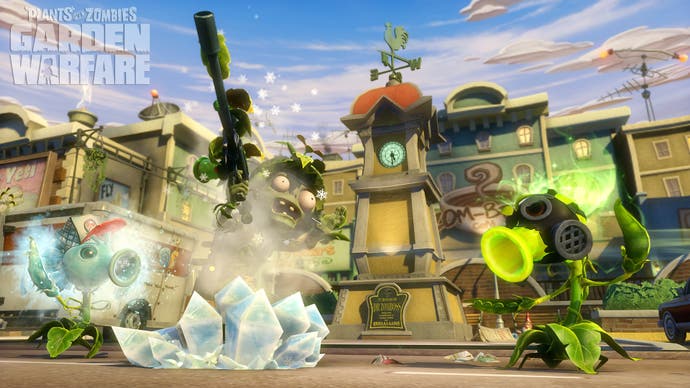
Every class has three special powers which are rapidly unlocked as you play. Success comes from teamwork and the studied used of every power at the right time. Unlike a typical online shooter, though, this ranking-up process happens over the course of one or two matches, levelling the playing field and giving you time to learn the intricacies of every character.
While it's admirable that PopCap wants players to unlock its game's full potential quickly, it does mean Garden Warfare lacks the tail that makes the most successful shooters so addictive. Instead of a steady stream of unlocks, perks and prestige, Garden Warfare instead offers a Sticker Shop, which lets you exchange coins earned in game for Ultimate Team-style sticker packs.
Here, you're doled out a random selection of customisation options for your characters, as well as single-use armaments that can be potted in the plant-pots that surround the Gardens, or in rubble-strewn graves dotted about the map. The Plants have access to turrets, health stations and standard defensive options, while the Zombies can spawn minions; AI controlled teammates that can act as a distraction or even do serious damage if left alone.
This lends Garden Warfare another wrinkle, as saving up your coins lets you buy more valuable packs, leading to more options on the battlefield. The cynic in me instantly saw this as the hook - the ugly revenue stream that'll have over-zealous reaching into their digital wallets to pitchfork over a dollar here or a quid there. PopCap has swiftly slapped such cynicism square in the face, though - like Titanfall, there are no microtransactions here at all, giving you a entertaining simulacrum of consumerism every time you dive into the Sticker Shop, but never actually asking you to spend anything. Utterly refreshing. Oh, and it actually works online straight out of the box. No crashes. No broken servers. No glitches. Makes a nice change.
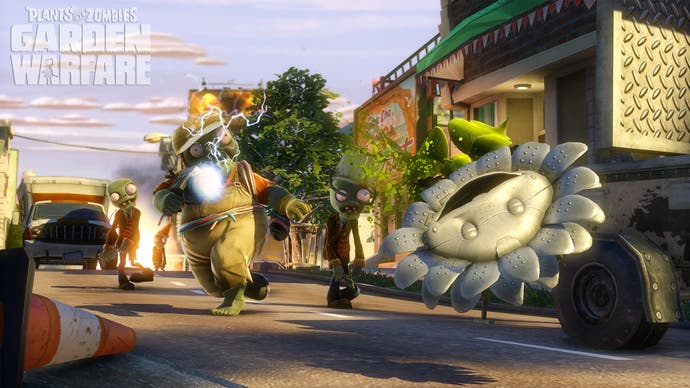
Still, Garden Warfare does have its limits. The ten maps are split across its modes, and you'll quickly see the likes of Port Scallywag and Suburban Flats more often than you might want. And with only Team Vanquish (a first-to-50 deathmatch mode) joining Garden Ops and Gardens And Graveyards, there's not a great deal in common or garden variety. Niggles start to irritate too - teammates' names appear microscopic on-screen, and it's near-impossible to keep track of players in your own party. A patch to highlight your friends in-game would help considerably.
Nevertheless, Plants vs Zombies Garden Warfare is quite the conundrum. It shouldn't work. It's a multiplayer shooter based on a casual game, and a casual game that has taken a turn for the ugly thanks to its microtransaction-laden sequel. Yet it does. It's just expertly made, thoughtfully constructed action whose blue skies and lush lawns make for a welcome aesthetic alternative to this genre's grubby mainstays.
It never hits the heights of Battlefield in its pomp, Call of Duty at its slickest or Titanfall in its explosive beta, but at its best Garden Warfare stirs the same emotions; the panic, the triumph, the tension and the elation. Whether anyone will stick with it once the Titans Are Ready is unsure, but PopCap has overachieved and delivered one of the most likeable games on next-generation hardware anywhere. Quite simply, I dig it.
